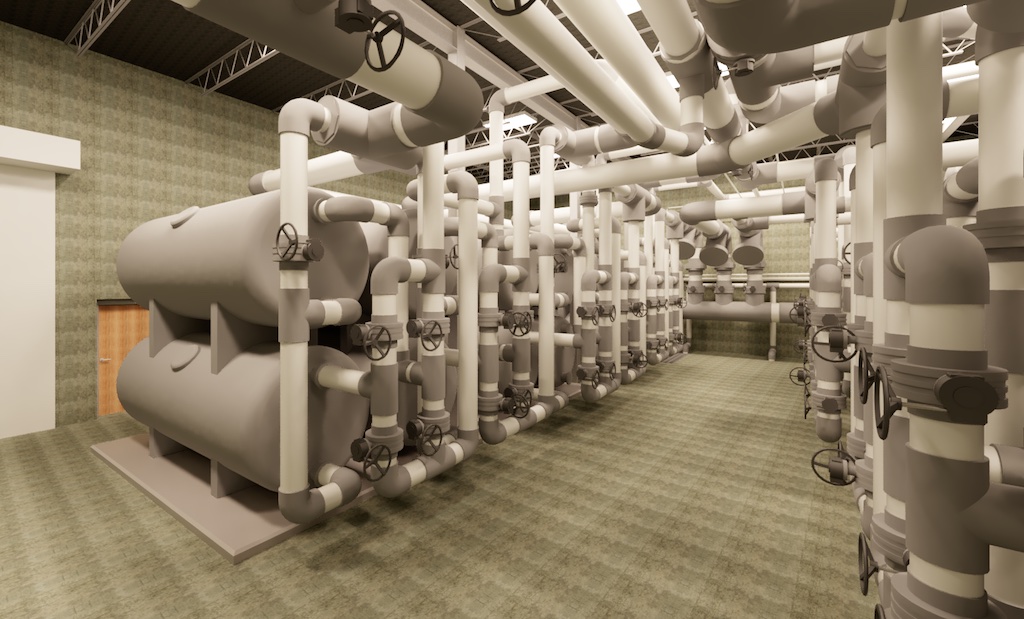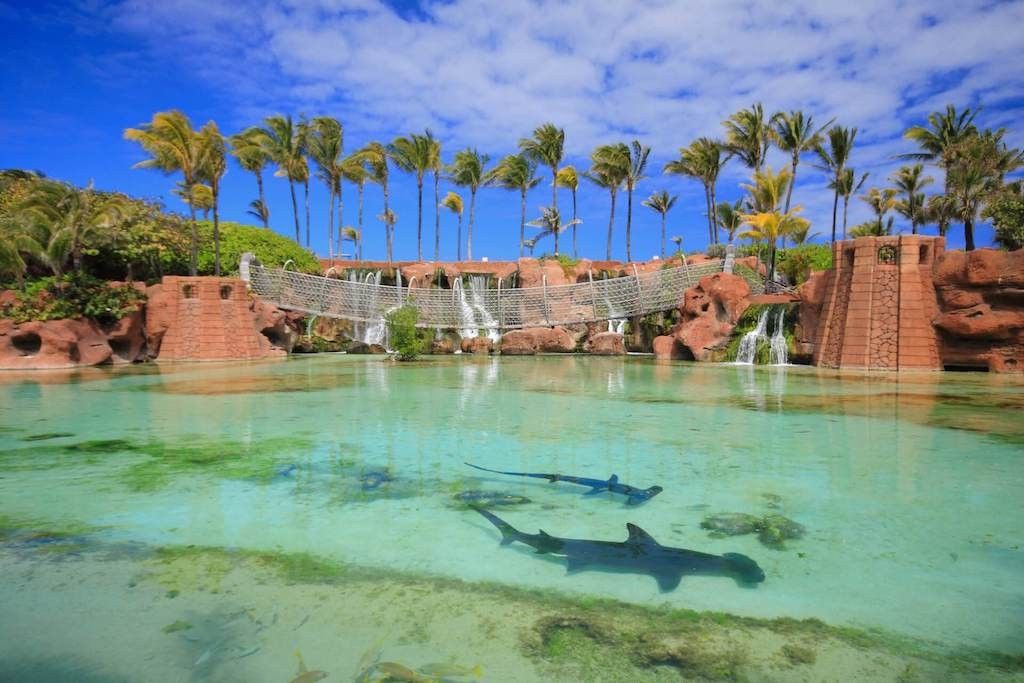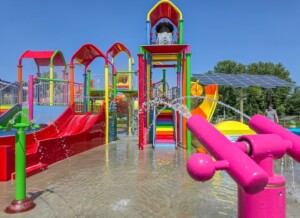Cloward H2O, an expert in aquatic design, has presented some top tips for water park operators on how they can make their facilities greener.
There are more than 300,000 existing commercial and recreational pools in the US aquatics industry alone, with thousands more being constructed every year. As the number of pools grows, environmental impact and saving money steadily become a greater concern.
Maintenance is key
For an existing facility, maintenance is essential.
Maintaining proper pool chemistry should be the number one priority of every pool operator. Pool chemistry has a strong effect on air quality, and if the air quality is bad, particularly in an indoor facility, it can have a negative impact on the building structure and HVAC system.
Cloward H2O says: “Operators should consider: is the treatment equipment in good repair? Is the paint coming off the walls? Is there scaling or etching on the pool shell because the water chemistry is out of balance? If the pool is enclosed, are the roof or walls falling apart? Are the pool area and back of house areas clean? These are all signs that something is wrong and can have a negative effect on pool patrons causing them to go somewhere else.”
When parts of the facility finally fail and need to be replaced, this creates a strain both environmentally and economically. The facility will need to close while the repairs are carried out and the deteriorated equipment, structure, or surface material will need to be removed and disposed of. More resources, energy and manpower will be required to generate the new products and have them installed. All the while this is costing the facility money with no steady income stream.
Reducing energy use
How can a pool facility reduce its use of natural resources? Running a facility like this uses a tremendous amount of energy. A pool needs electricity (pumps, controllers, motors, and other equipment) and fuel (often natural gas or propane for heaters and boilers).
“Some facilities use more energy than they need to, simply because the equipment was sized incorrectly,” says the company. “Besides using the right size of equipment, using high-efficiency motors and heaters/boilers, VFDs (Variable Frequency Drive) on systems that have varying loads (such as fans on the HVAC system), selecting low emission heaters and boilers, and using solar heating and natural lighting to its full advantage will make a huge difference both ecologically and financially for the facility.
“Other ways to reduce the amount of energy include using pipe sizes that require less head from the pump, turning down the treatment system at night when no one is in the pool, implementing a heat recovery system that works to the advantage of both the pool treatment system and the HVAC system, and heating the makeup water.”
Every facility is unique, and these potential savings should be carefully considered and thought out.
Water is valuable
Water is the whole reason that aquatic facilities even exist. Clean potable water is not always readily available in all parts of the world, and can be costly to generate or transport, sometimes well over $10 per 1000 gallons. The average cost of potable water in the US is about $2 per 1000 gallons. Thus, the makeup water of a 100,000-gallon pool will cost between $6 and $30 for the water alone every time the filters are backwashed, and this does not consider evaporation and splash-out.
“Regular backwashing is critical for filter operation and maintenance and to ensure the long life of the filter and filter media, reduce the power required by the pumps, and maintain good water quality. However, there are options worth exploring, including emerging filter technologies, that can reduce the strain on the local freshwater supply.”
For example, the Beijing Aquatic Center, built for the 2008 Olympics, has a system that collects the rainwater from the roof into a cistern to use as needed for makeup water.
“On the other end of the water equation is the actual water that is disposed of during backwash. This water is the vehicle that takes the dirt from the filters away from the facility. One suggestion is to recover the backwash water, filter and treat it, and then reintroduce it back into the pool as is done with large aquariums.”
“This typically is not suited for pools because it may violate health department regulations. Backwashing also helps control the level of TDS by maintaining proper dilution levels. But backwash water can still be put to good use; it can be run through a drum screen and used for greywater irrigation instead of using culinary water.”
There may be some concern with the chemical content in the backwash water. There are many places that will not allow backwash water to be dumped into the sanitary sewer because of the pool chemicals. This concern is raised primarily because of the risk of any oxidizers (i.e. chlorine) destroying the microorganisms required for the treatment of wastewater.
Except for a few cases, most backwash water has a low ORP level. If this does become an issue and concern, the addition of sodium thiosulfate will resolve this. If the backwash water is used for greywater irrigation, moderate levels of chlorine are not a concern since most culinary water systems already have a chlorine residual and have been successfully used for the watering of plants, trees and grasses.
Chemical alternatives
There are alternatives to using chlorine as the primary sanitiser, which are cheaper and environmentally friendly.
The firm says: “One such alternative is the use of ozone working in tandem with chlorine or bromine. Ozone has received a bad reputation from health departments and pool operator courses. While it is true that ozone can be dangerous if not dealt with correctly, a well-designed system will eliminate the risk of any harmful effects from ozone.
“Ozone is generated on-site as needed from ambient air, so there are fewer chemicals that need to be transported and stored, and no hazardous byproducts are created. You will still need to have chlorine in the pool as a residual sanitiser to meet health department requirements, but the amount of chlorine required is greatly reduced. This means that less chlorine needs to be produced, transported, and stored.”
Because of the savings in chemicals, an ozone system can usually pay for itself in two years or less. And as a bonus, water quality will be better.
Everyone benefits from a greener facility
Implementing and operating a “green” aquatic facility is not as overwhelming as it may sound.
Being environmentally conscious does not need to come at the expense of the patron’s experience or reduce a facility’s bottom line. In fact, an environmentally conscious facility will generally improve the patrons’ experience and also save the facility money.
“It is always easier to make a facility green starting from the design before it is even constructed, but even facilities that have been around for decades can improve operations that will have a tremendous positive impact. Proper maintenance, higher efficiency pumps, reducing chemical use and improving air quality are all items that should be addressed by every facility.
“Products and technology in the aquatic industry are continuously advancing. When items are due to be replaced, serious thought and consideration should be given to using high-efficiency and environmentally conscious products.
“At the end of the day, everyone benefits from a green facility.”
Cloward H2O recently celebrated the completion of one of its latest projects in The Bahamas, which was recognised as The Caribbean’s Leading Water Park 2022 in the World Travel Awards.
To find out more about sustainability in water parks and other visitor attractions, why not attend greenloop, blooloop’s annual sustainability conference?

















